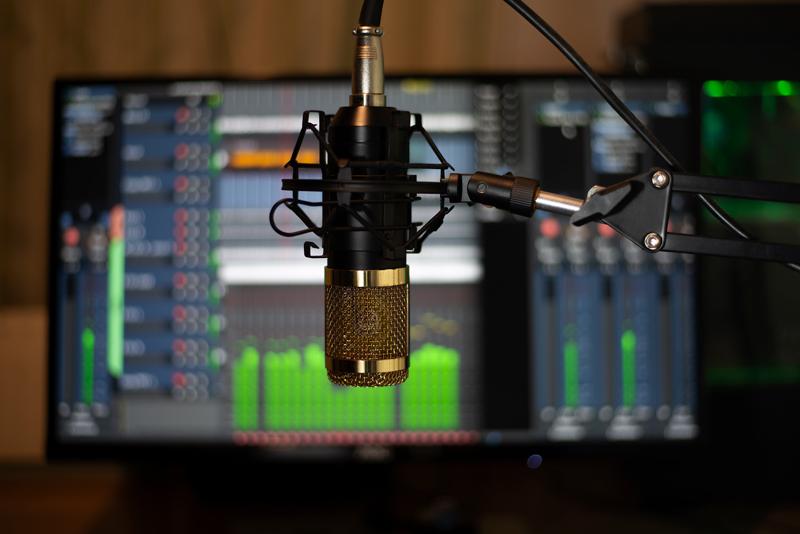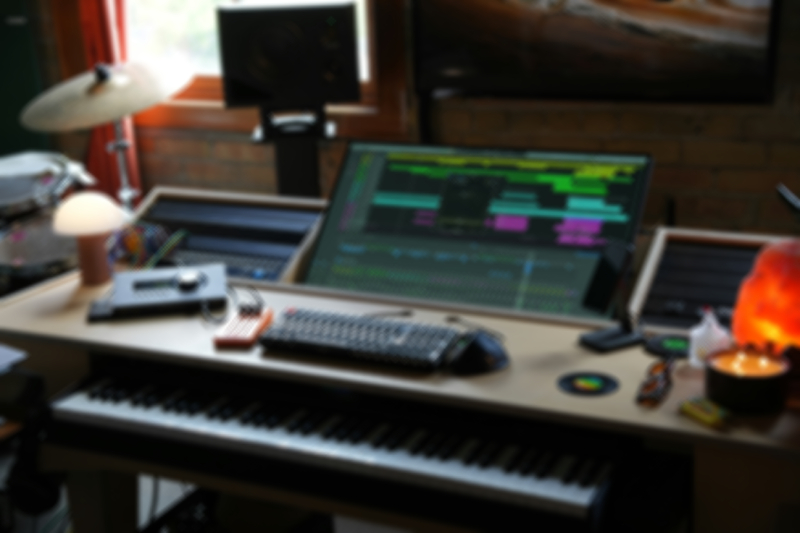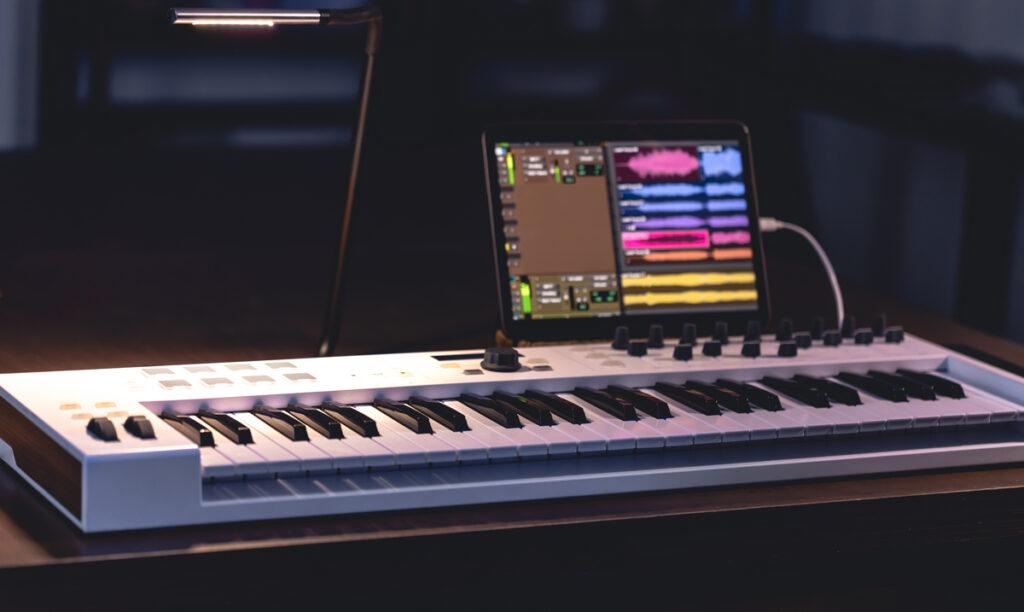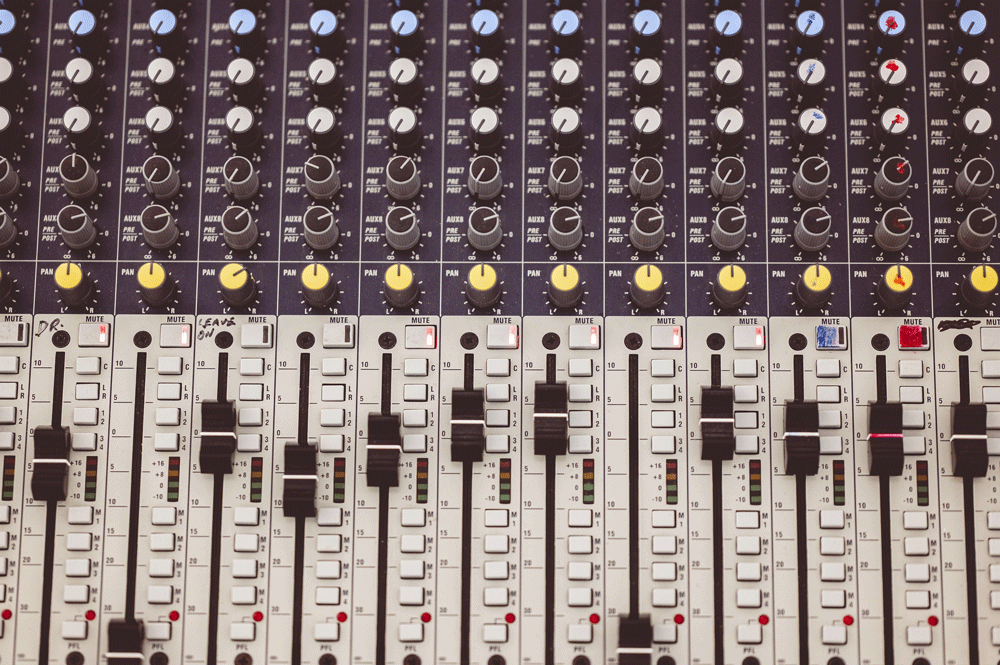Auto-Tune and Melodyne are both pitch correction tools, but they work differently and are used for different tasks. Ideally, both of them should be in an audio engineer’s tool kit, to use which is best in every case. It’s useful to know their unique features and be able to make an informed comparison of Melodyne vs Auto-Tune.
In this article, we’ll describe both tools and the difference between them from an audio engineer’s point of view.
 Celemony Melodyne 5
Celemony Melodyne 5
Melodyne is software for manual pitch correction of musical recordings. It works only for offline editing and can’t be used for real-time pitch correction of performances during recording sessions or at concerts.
What Celemony Melodyne 5 allows you to do
Melodyne offers the engineer a variety of options, allowing to edit pitch, length, as well as several expressive characteristics of a note like, for example, vibrato. You can also manage the overtones of each note and adjust the timbre.
At the same time, Melodyne 5 can be used for de-essing and editing out breath and consonant sounds without harming the overall sound.
Working with polyphony and multiple tracks
What’s really impressive about Celemony Melodyne 5 is that it works with polyphony too, it means that you can modify whole chords and clean up the performances of polyphonic instruments such as string instruments, pianos and keyboards, etc. The plugin recognizes harmonies and keys, and can automatically adjust them and their timing.
You can work with multiple tracks simultaneously, not only doing pitch correction, but also creating additional instrumental parts from your sample library if necessary, and Melodyne 5 will help you fit pitch and timing seamlessly.
This software is compatible as a plug-in with almost every popular DAW, it also can be set up as a separate pitch correction application. It runs on Windows 10, Windows 11, and macOS.
Editions of Melodyne 5 you can choose from
The software comes in four editions: Essential, Assistant, Editor, and Studio.
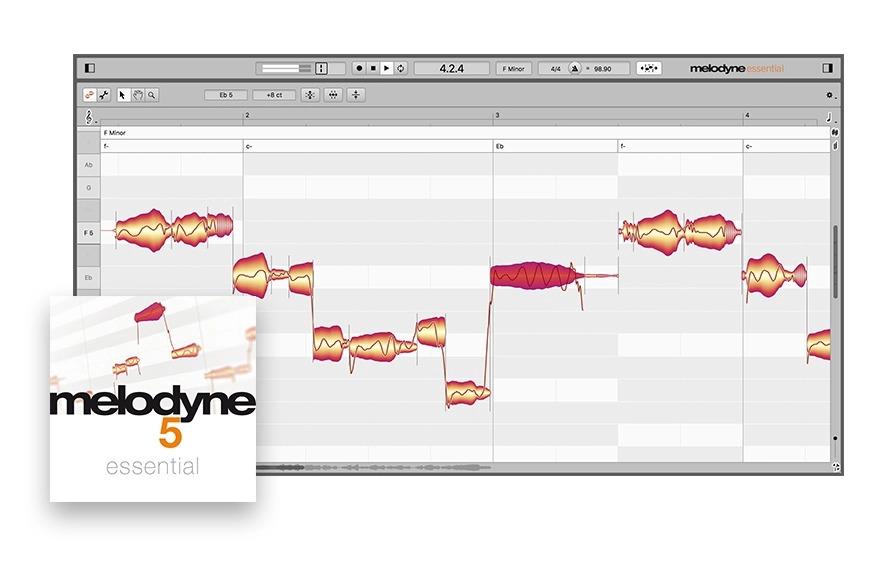
- Melodyne Essential is a good start if you are just beginning your journey in producing. It includes basic functions with which you can edit a singer’s performance.
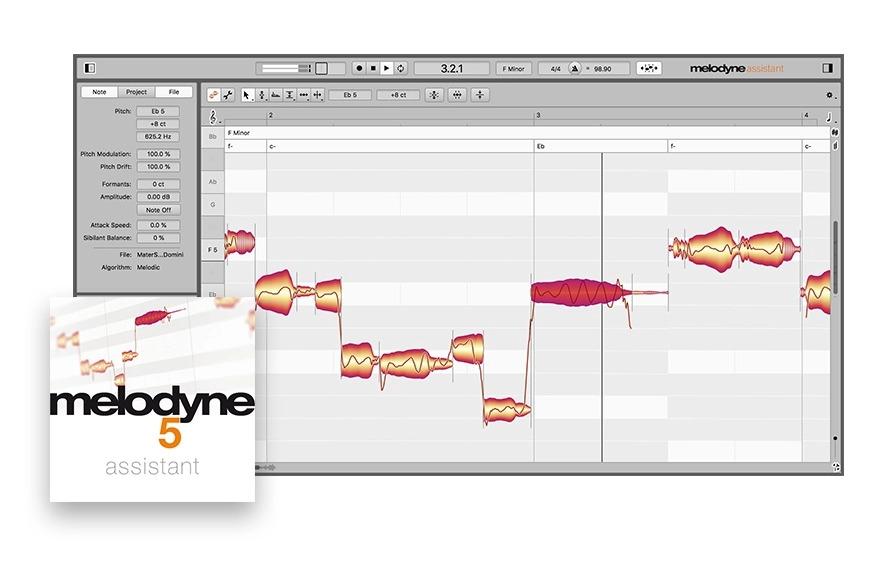
- Melodyne Assistant has better functionality with more note-based sound-editing options.
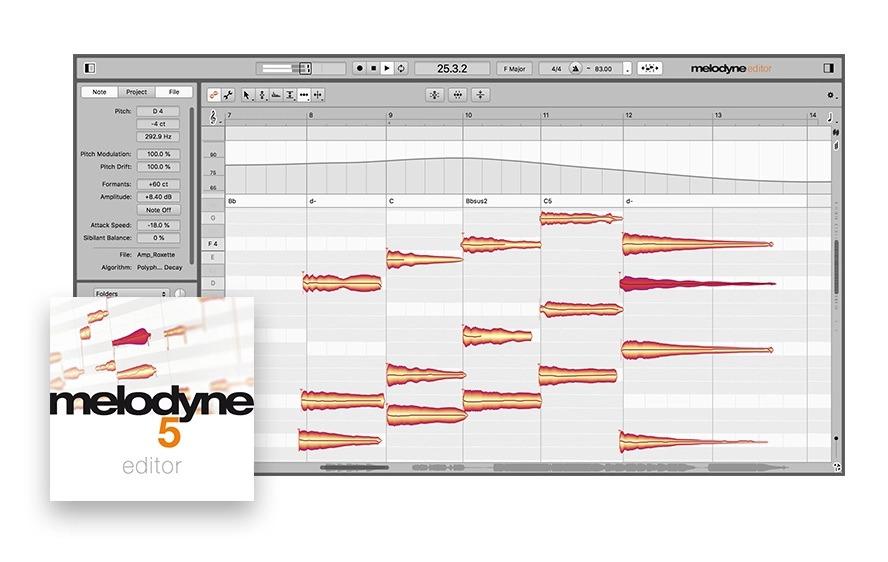
- Melodyne Editor is the tool where advanced functions kick in. Using it you can work with any instrument and polyphony. This edition of the software helps you use your sample library to enrich the harmony of the track you are editing.
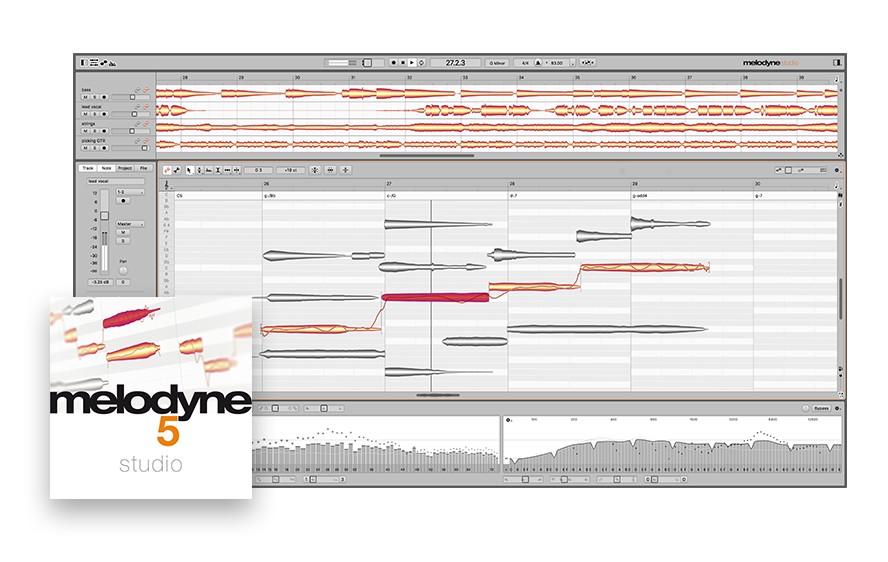
- Melodyne Studio, finally, is the edition that contains everything Melodyne 5 offers you. Here you have polyphony management, with multitrack editing options, a complete tool kit for vocal editing, and also for working with sample libraries and harmonies.
You can start from a simple edition of Melodyne 5 and switch to a higher one at any time. The editions are compatible so you can upgrade and continue working with no problems.
How much does Melodyne 5 cost?
The prices for Melodyne 5 start at around $99 for Melodyne Essential, and gradually go as high as $699 for Melodyne Studio. However, you can try Melodyne for free for 30 days, and even compare different editions and their functionality during the trial period.
Do singers use Melodyne?
Yes and no. Melodyne is often used in song production, but most often it’s not the singers who use this software but their mix engineers.
As you know, the most important thing in a song is emotion and the right vocal expression. However, when the recording catches the take with perfect intonations and feelings, the pitch of the singer’s voice might not be exactly correct in some places.
But thanks to the available pitch-correcting plug-ins, recording engineers don’t have to pay too much attention to the correct notes, but can concentrate all their attention on the emotions and expressiveness of the recorded voice. Later, however, it is absolutely necessary to clean up all the wrong notes in the vocal part, but this is the job of a mix engineer who will apply tuning software like Melodyne.
Is Melodyne 5 the best pitch correction?
There are a lot of alternatives, such as, for instance, VariAudio in Cubase, which also allows for pitch correction. Of course, which is the best every audio engineer decides for themselves and according to the tasks they perform. However, Melodyne 5 is great, many engineers believe that it is the best pitch correction software, and it’s extremely popular.
Melodyne 5 has a lot of functionality, and it will work with any DAW. So, if you are choosing between Melodyne and some similar plugin, use Melodyne 5 and you’ll not regret it.
Is manual pitch correction better than autotune?
Melodyne vs autotune is an old argument because manual editing gives more freedom than automatic pitch correction and empowers sound engineers with tools to correct the vocal offline any way they want.
At the same time, our experience of working with both Melodyne and Auto-Tune shows that Auto-Tune has great tuning algorithms and makes the sound more accurate. For example, if at some point of your recording you want to correct the pitch of a voice by a semitone, don’t be surprised if the result you receive using Auto-Tune appears better and the sound cleaner than Melodyne’s. That happens.
So, if you compare Melodyne vs autotune, you’ll most probably come to the conclusion that which is better depends on the task, that’s why many engineers end up owning both of them.
Can Melodyne work like Antares Auto-Tune?
Melodyne is designed for an offline, manual pitch correction only, this is the biggest difference between it and Auto-Tune.
At the same time, Auto-Tune can automatically correct the voice, it also has an option to work online, an artist can be performing or recording with Auto-Tune and listening to the result at the same time. Auto-Tune can work perfectly for concerts as a real-time pitch correction.
So, the answer is no, Melodyne can not be used instead of Auto-Tune, because a lot of functions of these two plug-ins are different
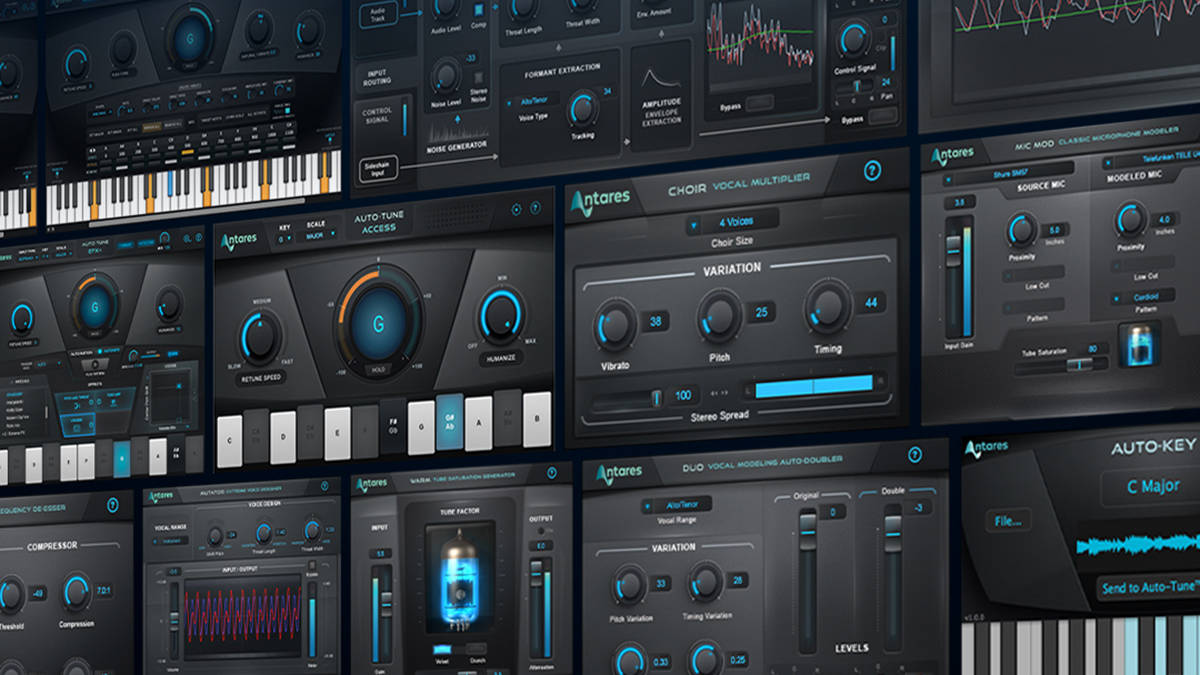 Antares Auto-Tune
Antares Auto-Tune
Antares Auto-Tune is the most popular software in the industry for tuning vocals, almost everyone uses it. Auto-Tune allows for real-time and offline tuning, and even has some manual pitch correction functions like Melodyne.
How does Auto-Tune work
Auto-Tune offers engineers a suite of tools for pitch correction on vocals or monophonic instruments. It enables automatic tuning of the sound to the desired note.
Real-time tuning as well as offline editing
Auto-Tune can be used for real-time pitch correction as well as for further editing of the recording. Artists often use it for real-time tuning of their voices during concerts and performances.
Recording your voice with Auto-Tune applied in real time is necessary when you plan to use this plug-in to create a robotic effect.
In our article How to Use Auto-Tune as a Pro, we explain why you should apply Auto-Tune during the recording session, check out the article if you are curious.
Diverse functionality
Auto-Tune gives you a lot to choose from. You can work with small parts of the recording as well as with the track as a whole. You can choose a particular key of the song, or use a chromatic scale as the basis for correction.
Changing different Auto-Tune parameters like Throat, Vibrato, Humanize, and others, you can shape the vocal however you like.
Inaudible correction or robotic effect: your choice
One of the advantages of Auto-Tune is that the plugin allows the engineer to correct the pitch of a vocal gently so that the tuning will be unnoticeable and the singing would sound as natural as possible. And at the same time, Auto-Tune can be used to do exactly the opposite of gentle correction.
Many artists use it for creating the famous Auto-Tune effect. It’s when you turn the Auto-Tune setting of Retune Speed to zero, adjust some other parameters, and the tuning becomes abrupt, creating robotic intonations in the singer’s voice. This feature you can use for real-time tuning and for later editing work as well.
To learn more about how to use Auto-Tune, if you are starting or planning to work with this tool, read our tutorial How to Use Auto-Tune as a Pro it will help you quickly learn the settings and the main functions, and we also give you some useful Auto-Tune presets and tips.
Antares Auto-Tune products and costs
Antares offers a whole line of Auto-Tune products, among which the most professional is Auto-Tune Pro. This version contains developed functionality, including graph mode for manual pitch correction, more settings for unnoticeable gentle editing, and good latency characteristics for working in real time. The cost is a $459 one-time payment.
Besides this professional edition, there are several more budget options, $100-$350, tailored for certain tasks:
- Auto-Tune Access, which represents the basic functionality,
- Auto-Tune ARTIST is the version with low latency made especially for live concerts,
- Auto-Tune EFX+ with special creative effects,
- Auto-Tune VOCAL EQ with advanced equalizer for vocals, and others.
Antares also offers you to purchase an annual subscription for less than $200 a year, with which you’ll have access to all Auto-Tune products, vocal effects and EQs, tutorials, guides, and updates.
Is Auto-Tune better than manual pitch correction?
Auto-Tune is a highly-functional tool and crazy popular pitch correction software, but so is Melodyne. As we said earlier, it can be used online, at concerts, and during recording sessions. It has a lot of different options and tools for a producer, including Graphic mode which works a little like Melodyne.
However, Auto-Tune is automatic correction, you can not completely be in charge of how it tunes the vocal or instrument. Although it has lots of settings and gives you relative freedom to change the parameters, Melodyne provides the engineer with more control and means to shape the sound any way they like. Regarding this, Melodyne, as manual editing, can be considered better.
Does Auto-Tune make you sound better?
It surely does. Today, everyone in the industry uses it, so there is no way you can win without using this plugin more or less. The question is whether you are going to apply just a gentle touch of it to correct small mistakes, or will you add the robotic effect to the sound like Lil Wayne and others?
Now you almost don’t hear slightly off-tune parts in singing, not one note, even when it would be beautiful to leave them this way. Audio engineers have tons of tools to work with the sound these days, and they can do almost anything they want with it. The tendency is to correct all the mistakes and off-tune parts because modern songs are all very much processed and perfected.
Do all singers use Auto-Tune?
Not all of them, but the majority do use Auto-Tune all the time. Only the best of the best singers, if they choose so, allow themselves to skip the pitch correction. We are talking about Sam Smith, Adelle, and some other super-stars.
But unless you are at the top of the popularity, pitch correction is an industry standard for you and is considered to be a must.
Which Is Better For Live Performances?
Auto-Tune is the most popular plugin that allows you to very conveniently correct vocal performances in real time. It’s used at concerts by almost all singers.
There is a special version of the product that’s been optimized especially for online performances, it’s called Auto-Tune Artist. If you are planning to use the software mostly for concerts and performances, you can check out this version.
Melodyne would be impossible to use for real-time correction because this plug-in is designed for offline tuning, this is their biggest difference.
Want a free test mix of your track?
We get it.
That’s why we’ll do a full hybrid (analog + digital) mix of your song —
for free.
No upfront payment. No risk.
You only pay if you’re blown away. And if you are, we’ll slash 40% off the final price.
Nobody else in mixing and mastering offers this.
Why?
Because most studios say yes to every project. We don’t. We only mix what we’re excited about — so send us your best track. If we like it, we’ll mix it like it’s going to the Grammys.
👉 Just drop your name and email to get started.
Voice editing and pitch correction with Major Mixing
Here, at Major Mixing studio, we work with pitch correction all the time. Artists bring to us records for mixing that overall sound wonderful and have great emotions and intonations, but usually here and there they sing a little off-tune.
Sometimes there are errors in singing or accompaniment that if not corrected would spoil the whole performance. Sometimes, there are just minor off-tune parts, but they also must be corrected for a song to be able to compete and rise to the top of the charts.
With all the available tools and means for an audio engineer to use today, the industry simply won’t forgive you for unprofessional mixing. You must meet all the modern standards.
If you are planning to release your song into the world, you need to have it mixed and mastered perfectly, this way it will be able to successfully compete with thousands of other songs in the market.
We at Major Mixing studio will make the perfect mix you need, tune vocals and instrumental parts perfectly, because this is very important today, and professionally prepare your music for streaming.
Contact us now, if you want your songs to become future hits. We’ll be happy to help you on your way to success.






